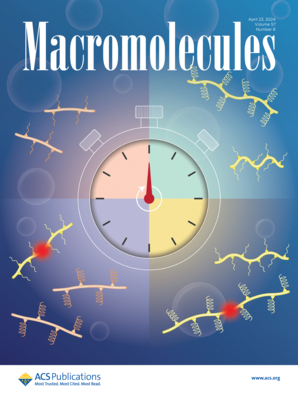Impact of Polymer Topology on Physical Aging of Thin Film Composite Membranes Based on PIM-1, cPIM-1, and Associated Blends
IF 5.1
1区 化学
Q1 POLYMER SCIENCE
引用次数: 0
Abstract
An overview is provided of the influence of polymer topology on the physical aging of PIM-1 thin film composite (TFC) membranes measured in gas permeation studies. Topologically distinct PIM-1 samples are compared first with each other, then in polymeric blends, and then with other literature. Both initial permeability (1 day) and long-term aging rates (up to 1 year) can be attributed to structural components present within the overall microstructure of the polymer. The rigidity and structural regularity of a predominantly disubstituted PIM-1 polymer proved to facilitate high initial CO2 permeability in TFCs followed by a rapid aging rate (βP = 1.0) to produce an increasingly nonselective membrane over 28 days. By contrast, TFCs prepared from branched PIM-1 polymers, which have lower glass transition temperature, exhibit lower initial permeabilities followed by much slower aging rates, remaining highly selective for up to one year. Branched PIM-1 polymers which contain a greater proportion of small loop structures show a very slow aging rate (βP = 0.22−0.25), whereas those with more open branched structure tend to exhibit a faster aging rate (βP = 0.67−0.69). Thin film nanocomposite (TFN) membranes cast from blends of a disubstituted PIM-1 with colloidal network (CN)-rich PIM-1 fillers can completely halt permeability aging for up to one month but then subsequently resume aging at a faster rate (βP = 1.8−2.8) to more than compensate. TFNs prepared from blending a branched PIM-1 polymer with a CN-rich Cardo-PIM-1 filler can produce better long-term aging performance (up to 1 year).

求助全文
约1分钟内获得全文
求助全文
来源期刊

Macromolecules
工程技术-高分子科学
CiteScore
9.30
自引率
16.40%
发文量
942
审稿时长
2 months
期刊介绍:
Macromolecules publishes original, fundamental, and impactful research on all aspects of polymer science. Topics of interest include synthesis (e.g., controlled polymerizations, polymerization catalysis, post polymerization modification, new monomer structures and polymer architectures, and polymerization mechanisms/kinetics analysis); phase behavior, thermodynamics, dynamic, and ordering/disordering phenomena (e.g., self-assembly, gelation, crystallization, solution/melt/solid-state characteristics); structure and properties (e.g., mechanical and rheological properties, surface/interfacial characteristics, electronic and transport properties); new state of the art characterization (e.g., spectroscopy, scattering, microscopy, rheology), simulation (e.g., Monte Carlo, molecular dynamics, multi-scale/coarse-grained modeling), and theoretical methods. Renewable/sustainable polymers, polymer networks, responsive polymers, electro-, magneto- and opto-active macromolecules, inorganic polymers, charge-transporting polymers (ion-containing, semiconducting, and conducting), nanostructured polymers, and polymer composites are also of interest. Typical papers published in Macromolecules showcase important and innovative concepts, experimental methods/observations, and theoretical/computational approaches that demonstrate a fundamental advance in the understanding of polymers.
 求助内容:
求助内容: 应助结果提醒方式:
应助结果提醒方式:


